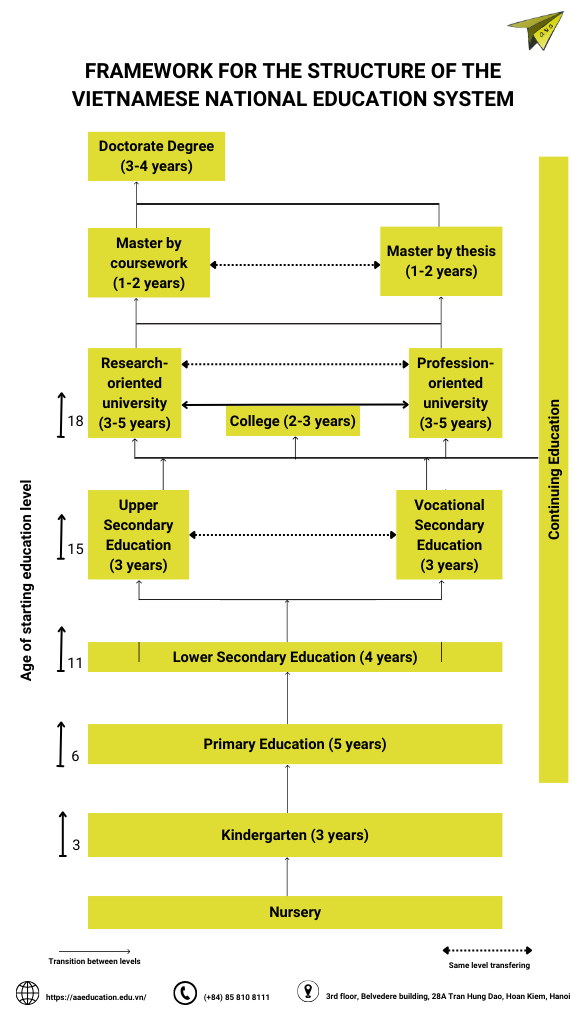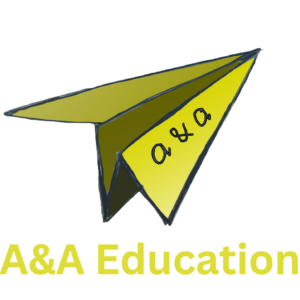Currently, Vietnam’s education system includes the following educational levels:
- Preschool education includes nursery (0.3-3 years old) and kindergarten education (3-6 years old);
- General education includes primary education (6-11 years old), lower secondary education (11-15 years old) and high school education (15-18 years old);
- Vocational education training at primary, intermediate and college levels (2-3 years);
- Higher education offers undergraduate (3-5 years), master’s (1-2 years) and doctoral (3-4 years) degrees

According to the flowchart, it can be seen that Vietnam’s education system has 8 levels, from Preschool education to the Doctoral training level. From high school education is divided into two streams: normal and intermediate high school, research-oriented university and application-oriented university. College is a path up for high school graduates. or intermediate. Outside of formal education, continuing education forms (It is defined as education provided to people of all ages and levels, in addition to formal education. Continuing education may include vocational training programs, higher education, community education, and non-formal education) are implemented at all levels of education from elementary school up.
According to Clause 1, Article 47 of the Education Law 2019 regulations on types of schools in the national education system as follows:
– Schools in the national education system are organized according to the following types:
+ Public schools are invested by the State, ensuring operating conditions and representing the owner;
+ People’s schools are founded by the grassroots community, including organizations and individuals in villages, hamlets, hamlets, hamlets, hamlets, hamlets, communes, wards and towns, investing in building facilities and ensuring good conditions. operating conditions.
This type of private school only applies to preschool education establishments;
+ Private schools are invested by domestic or foreign investors and ensure operating conditions.
+ A private school operating not for profit is a school in which the investor commits and implements the commitment to operate not for profit, stated in the decision to establish or change the type of school; operates not for profit, does not withdraw capital, does not enjoy profits; The annual accumulated profits are under common ownership and are not divided to continue investing in school development.
Thus, schools in the national education system are organized according to the following types: Public schools, private schools.
Vietnamese Education Summary Report 2022 by MICS-EAGLE[1] said Vietnam has a very high primary school completion rate (98%), approaching the goal of completing universal primary education. Although there is no difference between urban and rural areas, there are differences based on socio-economic conditions. The school completion rate decreased somewhat for middle school (to 87%) and decreased sharply for high school (to 59%). However, it should be noted that high school is an optional level of education in Vietnam. At all levels, children from the poorest households have school completion rates below the national average, while children from the richest households have school completion rates above the average of the whole country. The higher the level of education in the education system, the greater the gap in children’s school completion rates between the richest and poorest groups. While 92% of children from the richest quintile completed high school education, this figure for children from the poorest quintile was only 31%.
[1] MICS – EAGLE: Education Analysis for Global Learning and Equity – Education analysis for global learning and equity

